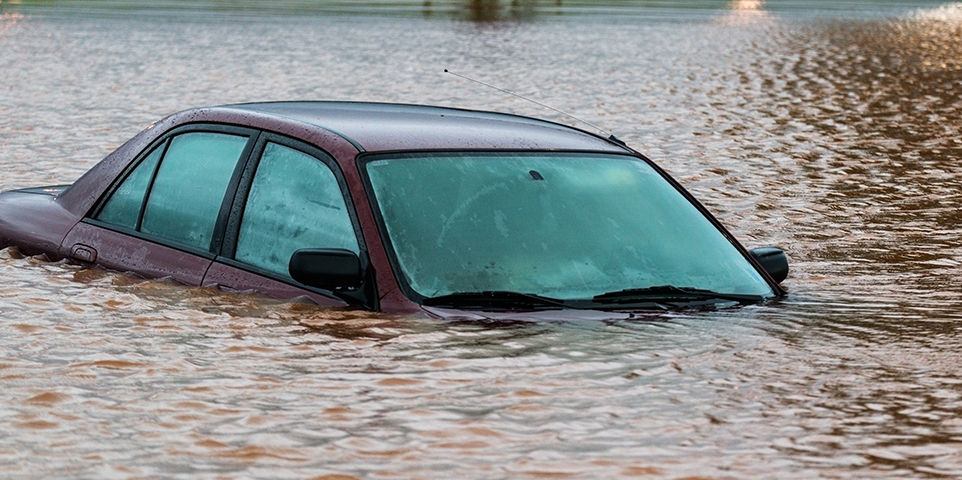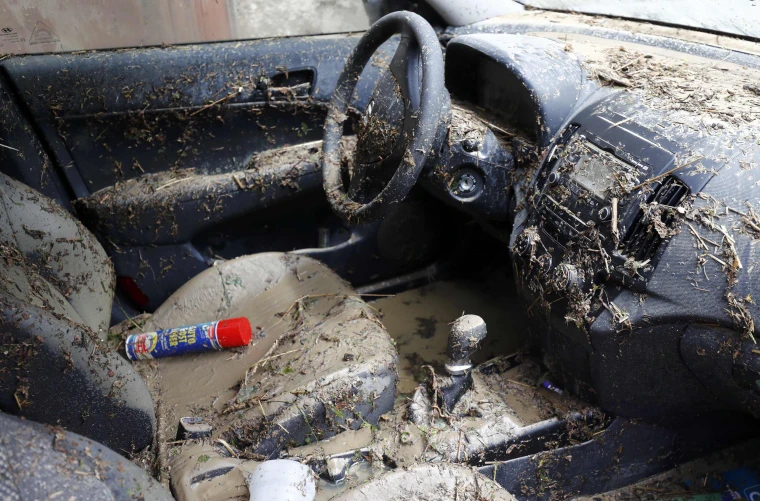Unexpected flooding can wreak havoc on a vehicle, with the engine being one of the most vulnerable components. When water infiltrates an engine, it can cause immediate damage, but the long-term effects are often even more concerning. From rust and corrosion to electrical failures, flood damage can severely shorten the lifespan of a car if not addressed quickly.
Taking immediate action is crucial to avoid these costly repairs down the line. However, addressing flood-related engine damage isn’t just a matter of time—it can also become a heavy financial burden. This is where using the best lending app can make a big difference. By offering quick access to funds, such apps help cover emergency repairs without straining your budget, ensuring your vehicle gets back on the road sooner rather than later.
Financial expert Mikka Montero often advises car owners to explore loan options in such situations. In her recent insights on allthebestloan.com, she highlights the importance of finding flexible and reliable lending options to ease the stress of unexpected vehicle expenses, especially after severe weather events like floods.
Understanding How Flood Damage Affects Car Engines
Water Ingress in the Engine: Floodwater can easily find its way into a car’s engine, primarily through the air intake and exhaust systems. When driving through deep water, the air intake, often located near the front of the vehicle, can suck in water instead of air. Similarly, water can enter through the exhaust pipe, which can create back pressure, forcing water into the engine’s internal components.
Once water enters the combustion chamber, it can lead to a dangerous condition known as hydro-locking. Unlike air, water cannot be compressed. As the pistons attempt to compress the water, the immense pressure can cause severe mechanical failures, such as bent connecting rods, cracked engine blocks, or damaged pistons. These damages are often irreversible, requiring complete engine replacement in the worst cases, making hydro-locking one of the most catastrophic effects of flood exposure.
Long-Term Damage from Flood Exposure
Corrosion and Rusting: Water exposure can be devastating for a car’s engine over time, leading to extensive corrosion and rust. When floodwater comes into contact with metal components like pistons, valves, and cylinders, it initiates oxidation, causing rust to form. This corrosion can weaken the integrity of these crucial parts, leading to reduced performance and, in severe cases, engine failure. Over time, rust buildup can also affect the engine’s ability to retain compression, leading to misfires or complete breakdowns.
The damage is even more severe when the vehicle is exposed to saltwater, which is far more corrosive due to the presence of dissolved salts. Salt accelerates the oxidation process, causing rust to spread faster and penetrate deeper into engine components, resulting in quicker degradation. Vehicles exposed to saltwater during floods are at a higher risk of long-term engine failure if not properly treated immediately.
Oil Contamination: Another critical issue caused by floodwater is oil contamination. Water mixing with engine oil compromises its ability to properly lubricate the engine’s moving parts. Normally, engine oil forms a protective barrier between metal components, preventing friction and wear. However, when water enters the oil, it dilutes its effectiveness, increasing friction between parts like pistons and cylinders. This leads to faster wear and tear, and if left untreated, it can result in catastrophic engine failure due to overheating and excessive friction.
Additionally, contaminated oil can create sludge, further clogging engine components and reducing the overall efficiency of the lubrication system. This long-term impact can shorten the lifespan of the engine significantly.
Electrical System Damage: Floodwater doesn’t just threaten the mechanical parts of an engine; it can also severely damage the electrical components that are critical for the engine’s operation. Most modern engines rely on a complex network of sensors, wiring, and control units to function. When water comes into contact with these sensitive electronics, it can cause short circuits, corrosion of connectors, and malfunction of key systems like ignition and fuel injection.
Waterlogged electrical systems can lead to unpredictable engine behavior, including stalling, failure to start, or erratic performance. These issues can be incredibly costly to repair, as many parts of the engine’s electronic control system may need to be replaced entirely to restore functionality. Left unaddressed, electrical damage can lead to long-term, intermittent problems that are difficult to diagnose and repair, driving up maintenance costs.
Warning Signs of Flood Damage
Common Symptoms: Flood damage can manifest in various ways, and recognizing the early warning signs can prevent more severe long-term issues. Some of the most common symptoms of flood damage in a car’s engine include:
- Stalling or hesitation when starting the engine: If the engine struggles to start or stalls unexpectedly, it may indicate that water has entered the engine, affecting its internal components or the electrical systems.
- Warning lights appearing on the dashboard: Flooding can damage sensors and electronic systems that monitor engine performance. If warning lights, especially the check engine light, appear after exposure to water, it’s a strong indication that something is wrong.
- Unusual engine sounds: Grinding, knocking, or unusual squealing noises coming from the engine can be signs of internal damage caused by water, such as corrosion or insufficient lubrication due to oil contamination.
What to Look for After a Flood: If your car has been exposed to floodwater, it’s essential to inspect for lingering damage that might not be immediately obvious. Here are some key indicators:
- Water in the oil: After a flood, check the engine oil. If it appears milky or frothy, this means water has mixed with the oil, compromising the lubrication system and potentially causing engine damage.
- Electrical malfunctions: Keep an eye on electrical systems like the headlights, power windows, and dashboard electronics. Water damage to these systems may result in delayed responses, flickering lights, or complete failure of certain components.
- Persistent engine issues: Difficulty in maintaining acceleration, rough idling, or unusual vibrations can be signs of deeper flood-related engine problems, such as rusting or corrosion in vital engine parts.
- Exhaust issues: Excess water in the exhaust system can create abnormal smoke or steam. If the exhaust is producing more smoke than usual, it’s worth having the vehicle checked for internal water damage.
Should You DIY or Seek Professional Help?
Minor Damage Fixes: In some cases, minor flood damage can be addressed at home, especially if the water exposure was limited. One of the simplest DIY fixes is draining excess water from the exhaust. If water has entered the exhaust system, it can often be removed by lifting the car’s front end slightly and allowing gravity to help drain the trapped water. Additionally, checking and replacing contaminated air filters, and even drying out carpets and seats to prevent mold, can be manageable for car owners with basic tools.
However, while these small fixes can be done at home, it’s crucial to remember that engine damage from flooding can be far more complicated than it appears. Proceeding with DIY repairs beyond surface-level fixes could lead to more significant problems if not handled carefully.
Professional Restoration: When it comes to flood damage affecting the engine and electrical systems, professional assessment is essential. Water can cause unseen damage deep within the engine’s components, such as corroded pistons, valves, or electrical shorts in critical systems like the ignition or fuel injection. Attempting to fix these without proper expertise can cause more harm than good.
Engine hydro-locking or extensive electrical damage from flooding requires specialized tools and diagnostics to assess and repair correctly. Professionals can perform comprehensive checks, such as scanning for electrical faults, testing engine compression, and replacing damaged wiring. They can also ensure that any water mixed with engine oil is fully drained and flushed, which is vital to prevent long-term engine wear or failure.
Expert Tip from Mikka Montero: Mikka Montero, a financial expert from allthebestloan.com, advises car owners to be cautious when deciding between DIY and professional repairs. According to Montero, “Cutting corners on flood damage repairs might save money upfront, but the long-term consequences can cost far more.” She recommends that if the damage extends beyond easily visible issues—especially when it involves the engine or electrical systems—it’s wise to invest in professional restoration. She also suggests using financing options, like loans from the best lending app, to cover the cost of extensive repairs, ensuring the job is done right without overwhelming your finances.



